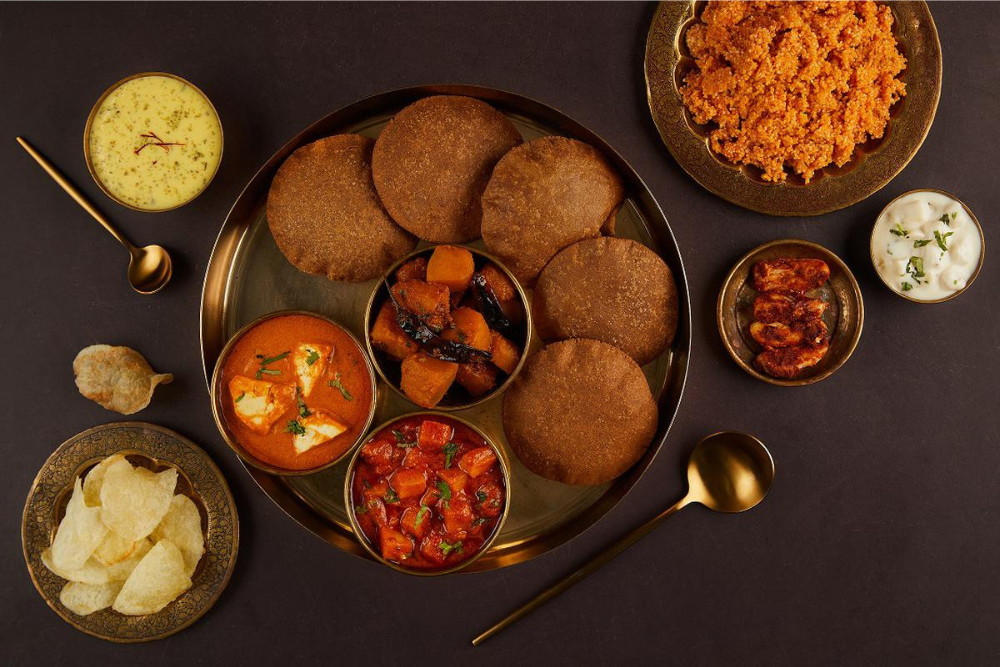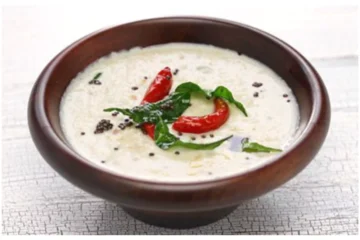Navratri is a festival where food takes a sattvic turn, focusing on purity, simplicity, and balance. Among the many spices that transform fasting dishes, Hing in Navratri Thali plays a powerful role. It not only adds depth to meals prepared without onion and garlic but also supports digestion during fasting days. Let’s answer some common questions about hing and its use in vrat cooking.
Is hing allowed during Navratri fasting — does it follow traditional vrat guidelines?
Short Answer: Yes, hing (asafoetida) in its pure form is generally allowed in vrat-friendly cooking, as it is plant-based and fits within sattvic guidelines.
Detailed Answer:
- Pure hing powder is derived from the resin of a plant and is not considered non-vegetarian, making it acceptable in fasting meals.
- It replaces strong flavours like onion and garlic, keeping the dish sattvic yet flavourful.
- Many vrat recipes such as sabudana khichdi, kuttu puri, and aloo curry traditionally use hing for tempering.
- However, always ensure the hing is not mixed with wheat flour (as some commercial varieties are), as that may not suit vrat rules.
- In sattvic cooking, moderation is key — a pinch is enough to elevate the taste without breaking the vrat’s spiritual discipline.
How does hing improve the taste of fasting dishes — especially when onion and garlic are avoided?
Short Answer: Hing adds a rich umami-like depth, balances bland ingredients, and enhances aroma in simple tempering.
Detailed Answer:
- Hing mimics the pungency of onion and garlic, making dishes more flavourful while staying vrat-compliant.
- It blends well with sabudana, samak rice, or lauki, which can taste bland on their own.
- A pinch of hing in hot ghee or oil enhances the aroma instantly, giving a rich flavour to simple meals.
- It brings balance when paired with spices like cumin, green chillies, and ginger in fasting recipes.
- Hing works especially well in tempering for curries, kadhi, and dry vegetable dishes.
Can hing help with digestion during fasting — especially when meals are carb-heavy?
Short Answer: Yes, hing’s carminative properties help reduce bloating, acidity, and heaviness after carb-heavy vrat meals.
Detailed Answer:
- Navratri meals often include kuttu, singhara, and sabudana, which can be heavy to digest.
- Hing contains compounds that reduce gas formation and aid smooth digestion.
- It prevents acidity that sometimes occurs after eating fried vrat snacks.
- Hing improves metabolism, helping the body process carb-rich meals more efficiently.
- Regular use of hing in tempering can keep the stomach light and prevent discomfort during fasting.
What are some must-try hing-infused dishes for my Navratri thali?
Short Answer: Hing can be used in savoury and sweet vrat recipes like aloo-hing sabzi, vrat kadhi, lauki curry, and even dry fruit laddoos.
Detailed Answer:
- Aloo-Hing Sabzi: A light potato curry tempered with hing and cumin.
- Lauki Curry with Hing: Bottle gourd simmered with green chillies and hing tempering.
- Hing-Tempered Vrat Kadhi: Made with singhara flour and yoghurt, finished with hing tadka.
- Sabudana Khichdi: Hing enhances its taste along with roasted peanuts.
- Dry Fruit Laddoos: Adding a tiny pinch of hing balances the natural sweetness and aids digestion.
How much hing should I use — and what’s the best way to temper it?
Short Answer: Use just a pinch of hing in hot ghee or oil, paired with cumin or ginger, for maximum flavour release.
Detailed Answer:
- Hing is very strong; only a pinch (about 1/8 teaspoon) is enough per dish.
- Always dissolve hing in hot ghee or oil first, as heat unlocks its aroma.
- Pair hing with cumin, curry leaves, or ginger for enhanced flavour.
- Add it early in tempering so it infuses well into the oil before other ingredients.
- Avoid overuse — too much hing can make dishes bitter and overpowering.
Table: Recommended Hing Use in Common Navratri Dishes
| Dish | Hing Quantity | Best Way to Use |
|---|---|---|
| Aloo-Hing Sabzi | 1 pinch | Temper in ghee with cumin seeds |
| Sabudana Khichdi | 1 pinch | Add during ghee tempering with green chillies |
| Vrat Kadhi | 1 pinch | Mix in hot ghee before adding to kadhi |
| Lauki Curry | 1 pinch | Temper with cumin and ginger in ghee |
| Dry Fruit Laddoos | Tiny pinch | Add in melted ghee before binding laddoos |
Conclusion
Hing in Navratri Thali is not just about taste — it is about balance, digestion, and tradition. A pinch of hing elevates sattvic dishes, making them aromatic, flavourful, and light on the stomach. From aloo sabzi to vrat kadhi, hing proves why it has been a trusted spice for centuries. This Navratri, embrace hing in your thali and let it add magic to every bite.





